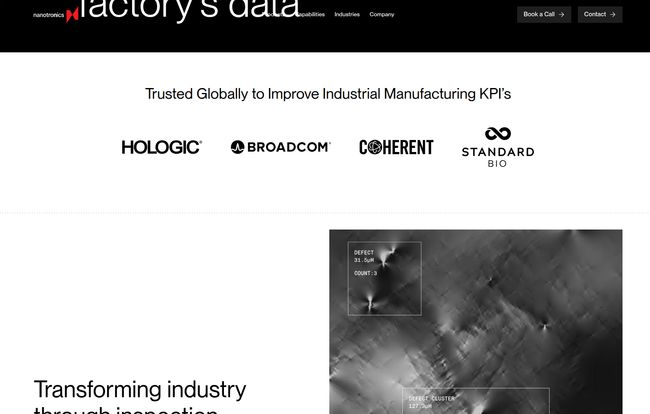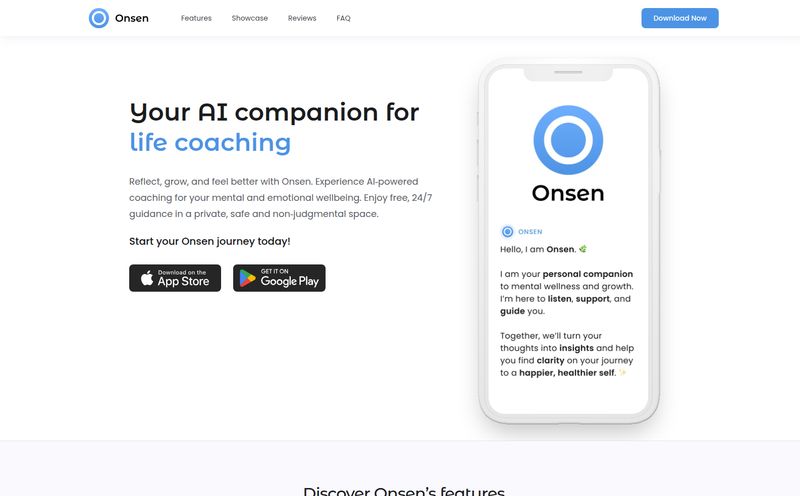I spend a lot of my time looking at trends, traffic, and the tech that promises to change everything. And let me tell you, the term 'AI' gets thrown around like confetti at a parade. Most of the time, it’s just marketing fluff. But every now and then, you stumble upon a company that seems to be doing something genuinely substantial. Something that makes you lean in a little closer. That's the feeling I got when I started digging into Nanotronics.
They’re not exactly a household name, unless your house is a multi-billion dollar semiconductor fabrication plant. But what they're doing with AI, computer vision, and good old-fashioned optics is, frankly, pretty wild. They’re building systems that give factories a type of superhuman sight, and it could be one of the biggest leaps forward for manufacturing since the assembly line.
So, What's the Big Deal with Nanotronics?
Alright, let's cut through the corporate jargon. At its core, Nanotronics builds incredibly advanced systems for automated optical inspection (AOI) and process control. Imagine the most high-stakes production line you can think of—maybe for computer chips, or advanced medical devices, or parts for an F-35 fighter jet. The components are often microscopic, and a single, invisible-to-the-naked-eye defect can render the entire product useless. A costly mistake.
Traditionally, you'd have humans with microscopes, or older, less sophisticated machines, trying to catch these flaws. It’s a slow, error-prone process. Nanotronics comes in and replaces that with an AI-powered platform. Think of it as a combination of a ridiculously powerful microscope and a brain that learns on the job. It not only spots defects with terrifying accuracy but starts to understand why they're happening. That’s the real magic here.
More Than Just a High-Tech Magnifying Glass
What really caught my attention is that this isn't just about spotting errors after they're made. Their website talks about a "paradigm shift in process control," and from what I can gather, that’s not an exaggeration. By feeding real-time data from the inspection back into the system, their platform helps manufacturers adjust on the fly. It's the difference between a smoke detector and a fire prevention system.
One spots a problem that's already happening; the other analyzes the conditions to stop the fire from ever starting. For industries where one tiny mistake can cost millions, that’s everything. This is where you see the promise of autonomous manufacturing come to life. Not robots just building stuff, but an entire ecosystem that sees, thinks, and refines itself. It's a whole different ballgame.

Visit Nanotronics
Who Needs This Kind of Super-Vision?
This kind of tech isn’t for your local furniture maker. We’re talking about industries where precision is not just a goal; it's the entire foundation of the business. Nanotronics has some heavy hitters on their partner list, like Broadcom and Hologic, which tells you a lot.
Key Industries in their Sights:
- Semiconductors: This is the big one. As chips get smaller and more complex, the need for flawless inspection becomes insane. Nanotronics helps find defects on silicon wafers and other components that would be impossible to spot otherwise.
- Aerospace & Defense: When a part is going into a satellite or a missile defense system, "good enough" doesn't cut it. The integrity of every single component has to be perfect.
- Healthcare & Life Sciences: From medical implants to lab-on-a-chip devices, automated inspection ensures both safety and efficacy. No one wants a faulty pacemaker.
- Automotive: Especially with the rise of EVs and autonomous driving, the electronic components in cars are more critical than ever.
Basically, if you're making something very small, very expensive, and very important, this is probably on your radar.
The Impact on the Factory Floor and the Bottom Line
Okay, so the tech is cool. But as someone focused on business growth, I always ask: what does it actually do for the business? This is where Nanotronics’ pitch gets compelling. It's all about tangible KPIs. Their entire model is built on a few core promises:
First, improving yield. In manufacturing, 'yield' is the percentage of non-defective products you create. If you can bump that number up even a few points in the semiconductor world, you're talking about millions, sometimes tens of millions, of dollars in saved revenue. It's a massive lever to pull.
Second, reducing waste. Fewer defects mean less scrap. You're not just saving the cost of the discarded materials, but also the energy, labor, and machine time that went into making that faulty product. It’s a win for the balance sheet and a win for sustainability, which is a nice bonus.
And third, lowering costs over the long term. By automating a process that was once manual and slow, you increase throughput and reallocate your highly skilled human experts to tasks that actually require their creativity and problem-solving skills, rather than staring into a microscope for eight hours a day.
Let's Be Real: What's the Catch?
This all sounds incredible, right? Maybe a little too incredible. As with any high-end enterprise solution, there are some hurdles. First off, you won’t find a “Buy Now” button on their website. The pricing is not public, which is code for "if you have to ask, it's a significant investment." This is a custom, enterprise-level solution that involves hardware, software, and probably a fair bit of integration and training. It’s a capital expenditure, not a monthly subscription.
And that leads to the second point. Implementing something this sophisticated isn't like installing a new app. It likely requires specialized expertise on-site to manage and maintain the system. You're not just buying a product; you're adopting a new, highly technical manufacturing philosophy. For the right company, the ROI is a no-brainer. But for others, the initial complexity and cost could be a major barrier.
My Take: Is Nanotronics the Future?
After looking at what they do, who they work with, and the problems they solve, I've gotta say I'm impressed. While the marketing world is obsessed with generative AI making pictures and writing poems, Nanotronics is using AI in a way that feels incredibly grounded and impactful. They are harnessing data to solve a real, physical-world problem.
Their growth, with offices now in places like Ohio and England in addition to their Brooklyn HQ, and deployments numbering over 250, suggests they've found a very strong product-market fit. It's not a solution for everyone. But for the advanced manufacturing sector, it feels less like a luxury and more like an inevitability. In the race for perfection, having an AI that never blinks might just be the ultimate competitive advantage.
Frequently Asked Questions about Nanotronics
- What does Nanotronics actually do in simple terms?
- They build smart inspection systems for factories. Using AI and powerful cameras, these systems automatically find tiny defects in high-tech products like computer chips, which helps companies make better products with less waste.
- Is Nanotronics only for huge corporations?
- Their client list includes major global companies, and the technology is best suited for high-volume, high-stakes advanced manufacturing. While they might have solutions for smaller operations, their main focus appears to be on the enterprise level.
- How much does a Nanotronics system cost?
- They do not publish their pricing. Solutions are customized for each facility, so you have to contact them directly for a quote. Expect it to be a significant capital investment rather than a simple purchase.
- What makes their AI different from other inspection systems?
- The key difference seems to be the integration of AI for process control. It doesn't just find defects; it learns from them to help predict and prevent future issues, creating a self-improving manufacturing loop.
- Where is Nanotronics based?
- Their headquarters are in Brooklyn, New York, but they have a global presence with offices in California, Ohio, and England to serve their international client base.
Final Thoughts
The push towards what experts call Industry 4.0 is all about creating smarter, more connected factories. Companies like Nanotronics are right at the heart of that movement. They're not just selling a machine; they're selling a new way of thinking about quality and efficiency. It’s a powerful proposition, and one I'll be watching closely.
Reference and Sources
Nanotronics Official Website: All product and company information was sourced from their public site.
The Wall Street Journal: "Nanotronics, an A.I. Start-Up, Grows in Brooklyn" (June 13, 2018). For background on the company's growth.
IBM: "What is Industry 4.0?" For general context on the smart factory trend.



